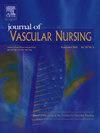Insights identifying priorities from providers and patients to optimize a vascular surgery hospital discharge: A qualitative study
IF 1.2
Q3 NURSING
引用次数: 0
Abstract
Objective
Hospital discharge is complex and requires care coordination of multiple disciplines. We evaluated perspectives and priorities of individual stakeholders involved in the vascular discharge process. This study aimed to identify barriers to an informed and cohesive discharge process based on individual stakeholders (physicians, advanced practitioners nurses, ancillary staff, patients, and families) perceptions.
Methods
Single center, qualitative analysis using a semi-structured focus group interview guide based on the validated hospital-based Reengineered Discharge (RED) process. Focus groups were audio-recorded, transcribed into text files, independently coded, and analyzed with Dedoose qualitative software using a directed content analysis approach. Thematic concepts were created and comparisons between groups was performed.
Results
Eight focus groups with 38 participants were convened. Participants included physics / advanced practice providers (n=12), nursing / ancillary staff (n=19), and patients / caregivers (N=6) Key themes affecting. Discharge for vascular surgery patients varied by group. Physicians cited low health literacy, poor understanding of discharge instructions, social determinants of health, and medical complexity as major barriers. Staff identified time constraints, medication access, and inter team communication as primary challenges. Patients highlighted complex discharge instructions, COVID-19’s impact on support systems, and technology barriers.
Conclusions
Healthcare providers and patients identified very different priorities regarding an optimized discharge. Physicians were most concerned with low patient understanding of impeding discharge. Nursing staff identified obtaining medications, inter-team communication, and time constraints as their greatest obstacles. Patients found the impact of COVID-19, lack of support systems, and accessing technology as the most difficult. These findings underscore the need for tailored interventions to improve the discharge process which account for individual stakeholders’ priorities to develop a national standardized “patient-centered” discharge process for patients with vascular disease.
从提供者和患者确定优先事项以优化血管手术出院的见解:一项定性研究
目的出院是一个复杂的过程,需要多学科的护理协调。我们评估了参与血管放电过程的个人利益相关者的观点和优先事项。本研究旨在根据个体利益相关者(医生、高级从业人员、护士、辅助人员、患者和家属)的看法,确定知情和有凝聚力的出院过程的障碍。方法采用基于医院再造出院流程的半结构化焦点小组访谈指南进行单中心定性分析。对焦点小组进行录音,转录成文本文件,独立编码,并使用Dedoose定性软件使用定向内容分析方法进行分析。创建主题概念并进行组间比较。结果共召集了8个焦点小组,38名参与者。参与者包括物理/高级实践提供者(n=12),护理/辅助人员(n=19)和患者/护理人员(n= 6)。血管外科患者的出院情况因组而异。医生们认为,健康知识水平低、对出院指示理解不足、健康的社会决定因素和医疗复杂性是主要障碍。员工认为时间限制、药物获取和团队间沟通是主要挑战。患者强调了复杂的出院说明、COVID-19对支持系统的影响以及技术障碍。结论医护人员和患者对优化出院的优先级有不同的认识。医生最关心的是患者对阻碍出院的理解程度低。护理人员认为获得药物、团队间沟通和时间限制是他们最大的障碍。患者发现COVID-19的影响、缺乏支持系统和获取技术是最困难的。这些研究结果强调,需要有针对性的干预措施来改善出院过程,这说明了个人利益相关者的优先事项,即为血管疾病患者制定国家标准化的“以患者为中心”的出院过程。
本文章由计算机程序翻译,如有差异,请以英文原文为准。
求助全文
约1分钟内获得全文
求助全文
来源期刊

Journal of Vascular Nursing
NURSING-
CiteScore
1.40
自引率
0.00%
发文量
33
期刊介绍:
Journal of Vascular Nursing provides clinical information regarding aortic and peripheral aneurysms, upper and lower extremity arterial disease, acute and chronic venous disease, and more. Original, peer-reviewed articles present descriptions, etiologies, diagnostic procedures, medical and surgical treatment and nursing implications of vascular system disorders.
 求助内容:
求助内容: 应助结果提醒方式:
应助结果提醒方式:


